Kedartal Trek 2024 – Journey To India’s High-Altitude Gem
Region: Uttarakhand
Base Camp: Gangotri
Days: 7
Altitude: 15,470 ft
Grade: Moderate
Distance: 24 km
Min Age: 16 Years+
Best Season: Summer & Autumn
Trek Description
The Kedartal Trek is an extraordinary high-altitude adventure that takes a traveler to the heart of the Himalayas. Nestled in the serene state of Uttarakhand, India, this trek is often hailed as one of India’s high-altitude experiences.
At the heart of this journey lies the mystical Kedartal Lake, lovingly known as Shiva’s Lake, cradled in the shadow of the awe-inspiring Mount Thalaysagar. This trek also offers a unique opportunity to witness the striking presence of Mount Brigupanth, affectionately called “Briggu,” with its distinct and captivating silhouette.
In the sacred town of Gangotri, the Kedartal Trek spans approximately 30 kilometers, divided over four days of hiking. The route encompasses several base camps, including the renowned Mount Thalaysagar Base Camp, Kedarkharak, and Bhojkarak, each offering a distinct perspective of this breathtaking terrain.
The true highlight of this expedition is the close encounter with Mount Thalaysagar and Briggu, providing a chance to marvel at their grandeur up close. Kedartal Lake itself is a marvel, nestled at a staggering altitude of 15,500 feet, making it one of the India’s highest glacier lakes.
This trek is not for the faint-hearted, as it presents a formidable challenge. With gradual ascents, steep sections, the renowned Spider Wall, and the risk of altitude sickness, it’s tailor-made for experienced trekkers with a high level of fitness and prior trekking experience.
As you traverse this landscape, you’ll be treated to a captivating array of flora and fauna, including bhojpatra, oak, deodar, cedar, and the enchanting Brahma Kamal (September and October). Wildlife enthusiasts can spot creatures like ibex, and the region is a haven for birdwatchers.
Rated as a level 4 to 5 difficulty trek due to the challenging gradient slopes and rapid altitude gain, the Kedartal Trek promises not only adventure but also moments of sheer beauty.
Itinerary
- Start your journey from Dehradun, heading towards the sacred town of Gangotri.
- The drive to Gangotri takes two days, allowing for gradual acclimatization to the altitude.
- Overnight stay at Gangotri to prepare for the trek.
- Explore the Gangotri market before setting off on the trek, where you can find necessary items and stock up on dry rations.
- Begin your trek from Gangotri to Bhojkarak, covering a distance of approximately 8 kilometers.
- The trail takes you through dense forests, rocky terrain, and steep ascents, providing an initial taste of the trek’s challenges.
- Don’t miss the famous “spider wall,” a challenging section of the trek with spiders above your head and a cave to crawl through, adding to the adventure.
- Arrive at the scenic Bhojkarak campsite for an overnight stay.
- Resume your trek from Bhojkarak to Kedarkharak, a relatively simpler leg compared to the previous day.
- Enjoy breathtaking views of the Himalayan landscape as you make your way to Kedarkharak.
- Kedarkharak serves as your campsite for the night.
- Kedarkharak, in addition to being a campsite, offers views of Gangotri Glacier and the flowing Kedarganga River.
- The most awaited day of the trek as you trek from Kedarkharak to Kedartal and return on the same day.
- As you progress, you’ll be treated to clear views of Gangotri Valley and distant peaks like Mount Thalaysagar and Mount Briggu.
- Witness the stunning emerald green Kedartal Lake with the magnificent Thalaysagar peak reflecting in its waters.
- Enjoy the exceptional sight of the sunset at Kedarkharak and the breathtaking reflection of Thalaysagar peak in Kedartal Lake.
- It’s a challenging yet immensely rewarding journey.
- Bid farewell to Kedartal’s enchanting beauty and descend back to Gangotri.
- Relish the last moments of the wilderness as you return to Gangotri, where you’ll spend the night.
- On the final day, depart from Gangotri and head back to Dehradun.
- Reflect on the incredible experiences and memories gathered during this high-altitude adventure.
What’s Included and Excluded?
Price Inclusion
- Stay: 3 Nights stay in Gangotri
- Camping: 3 Nights camping in Kedar Kharak campsite
- Meals: Meals from Day 1 dinner to Day 7 breakfast
- Permits: All the required forest and camping permits
- Equipment: Sleeping bags, Mattresses and Tent
- Safety: First aid kit with oxygen cylinder, Helmet, and Ecobag
- Certified Trek Leader
- Trek Completion Certificate
Price Exclusion
- Meals during the transportation
- Travel Insurance is not included
- Backpack Offloading: For backpack offloading additional fee of INR 2000 will be charged
- 5% GST is not included
- Any expenses or items not mentioned in the inclusion section are not covered
- Any expenses arising from emergencies during the trek
- Transportation from Dehradun to the base camp and back to Dehradun
- Any personal expenses
Things to Carry
- 45-60 Ltr Bag Pack With Rain Cover & Comfortable Straps
- Hot & Cold Water Bottle Like Borosil & Milton
- Energy Bar, Dry Fruits & ORS
- Personal Medical Kit
- 2/3 Full Sleeves (Non-Cotton)
- 1 Full Fleece T-Shirt
- 1 Fleece Jacket (Woollen Or Sweater)
- 1 Down Feather/Hollofil Jacket
- 1 Waterproof Jacket/Poncho
- 1 Pair Thermal Inners (Upper And Lower)
- 2 Trek Pants (Avoid Shorts & Denim Pants)
- 1 Pair of Waterproof Gloves
- 1 Pair of Woollen Gloves
- Sun Cap
- Woollen Cap
- 4 Pairs Of Cotton Socks
- 1 Pair Of Woollen Socks
- 1 Pairs Of Sunglasses (U/V Protected)
- 1 Neck Gaiters (Buff)
- Tiffin Box
- 1 Waterproof & High Ankle Trekking Shoes
- 1 Pair Of Floaters
- Hand Sanitizer & Sunscreen Lotion
- Toothbrush And Toothpaste
- Toilet Paper And Wet Wipes
- Quick Dry Towel
- Lip Balm & Antibacterial Powder
- Moisturizer
How To Reach Gangotri
If you choose to reach Dehradun by flight, it is the easiest and quickest medium. However, the air flight does not take you directly to Dehradun, but to Jolly Grant Airport, the nearest airport from the city. It is located approximately 25 kilometers from the city center, where several domestic airlines operate regular flights to and from Dehradun. Upon landing at the airport, you can hire a taxi, vikram, or take bus to Dehradun.
It is recommended to book your tickets a month or two before your departure date. Last minute flight booking is usually higher than regular price.
If direct flights to Dehradun seem to be pricey, then it will be wise to take flights to Delhi as they are more affordable. From Delhi, you can reach Dehradun via state bus like UTC, or HRTC or use apps like Abhibus or Redbus. Railways and shared taxis are also good options.
Traveling by train is another great option to reach Dehradun. You can reach there within a short period as it is well-connected to major cities by train. The Dehradun Railway Station serves as the primary railway station while you can also always choose Haridwar Railway Station. You can book tickets on various trains connecting Dehradun to places like Delhi, Mumbai, Kolkata, and more.
You can also travel via road to Dehradun from your hometown. Dehradun is connected by National Highways from/to the major cities like Delhi, Kolkata, and Chadigarh. So it will not be a problem in getting a transportation to Dehradun; however, it might not be as quick as air flight.
Nevertheless, you can still enjoy the beautiful views of the Himalayan foothills during your ride.
Gangotri, the starting point for Gaumukh Tapovan, is approximately 237.1 kilometers from Dehradun. To reach there, you can hire a private taxi or take a bus from Dehradun, which takes around 7 hours.
Buses to Uttarkashi leave early in the morning from Dehradun Hill Station and Prade Ground. The bus ticket usually costs 350 – 400 rs. And shared taxi charges from 400-500 which can be booked in Rispana pul and Prade ground. To reach Uttarkashi by 12 PM, you must board the bus early in the morning around 5 am. Taxis from Uttarkashi bus stand to Gangotri leave till 2 Pm during the summer season and 12 pm in the autumn season.
Once you reach Uttarkashi, you can get a shared taxi to Gangotri, which charges 300- 400 RS and can be found at the Uttarkashi taxi stand.
We also arrange transportation services for our trekkers, with the pick up point being Prince Chowk, Dehradun and pick up time between 6 am and 7 am. An add on of INR 2500 will be charged from trekkers.
Difficulty Level of Kedar Tal Trek
The Kedartal Trek is considered challenging and not recommended for beginners. Its difficulty level is typically rated between 4 and 5, which signifies a high difficulty level.
One of the primary challenges of the Kedartal Trek is the rapid gain in altitude. In just two days, you ascend from Gangotri to the Kedartal Lake, reaching a maximum altitude of around 15,500 feet (4,724 meters). This quick altitude gain can lead to altitude sickness, a condition that can be serious if not managed properly. Adequate acclimatization is essential to reduce the risk of altitude-related issues.
The trek involves steep sections and rocky terrain, particularly on the first day as you ascend from Gangotri to Bhoj Kharak. These steep sections can be physically demanding, especially if you’re not accustomed to such terrain.
The trek also features a famous and challenging section known as the “Spider Wall.” This is a narrow and near-vertical rock face with limited space for footing. While it can be crossed safely with care and focus, it adds to the overall difficulty of the trek.
Cold temperatures and potential snowfall can make the trek more challenging, especially if you’re not adequately prepared with appropriate clothing and gear.
Due to the strenuous nature of the trek, it’s essential to be in excellent physical shape. Regular exercise, cardio fitness, and strength training can help prepare your body for the demands of the trail.
Previous trekking experience, especially at high altitudes, is recommended for this trek. Familiarity with trekking techniques, equipment, and the challenges of high-altitude trekking can significantly enhance your safety and enjoyment.
Best Time for Kedar Tal Trek
If you’re planning to take the Kedartal Trek, timing is crucial to ensure a safe and enjoyable journey. This trek is among the highest-altitude adventures in India, offering stunning views and thrilling challenges. Here’s when you should consider setting out on this remarkable journey:
1. Mid-May to End of June: This period marks the onset of summer in the Himalayas. During these months, the weather is relatively stable, and the snow starts to melt, revealing breathtaking landscapes.
The temperatures are generally pleasant, making it an excellent time to trek. The lush greenery and clear paths make for a delightful experience.
2. Mid-September to Mid-October: This is the post-monsoon season when the region starts to regain its natural beauty. The skies are clear, and the surroundings come alive with colorful flora.
You’ll come across various trees like bhojpatra, oak, deodar, cedar, and the beautiful Brahma Kamal in September and October. It’s an ideal time for those who prefer a slightly cooler climate. Plus, the trail is less crowded, allowing you to savor the tranquillity of the Himalayas.
More Info of Kedar Tal Trek
The Kedartal trek isn’t just about scenic beauty; it’s deeply rooted in Hindu mythology. Kedartal Lake is believed to be a gift from Lord Shiva to the Bhagirathi River.
According to legend, King Bhagirath prayed to Lord Shiva to purify the souls of his 60,000 sons. Shiva granted this wish by asking Goddess Ganga to flow through these mountains. This mythological connection makes the trek spiritually significant.
Similar to how people collect Ganga Jal (holy water from the Ganges) in Gangotri, trekkers who follow Shaivism hold a deep interest in Kedartal. They often collect water from Kedartal, considering it sacred, just like the Ganges water. This practice is a spiritual ritual for them.
According to legends and historical texts, during the churning of the ocean (samudra manthan) by gods and demons, various precious elements emerged, including poison (vish). To protect the world from this poison, Lord Shiva consumed it, which caused his throat to burn.
In order to cool his throat, Lord Shiva drank water from a distant lake, which was around 18 kilometers away. This act of Lord Shiva transformed the lake into Kedartal, and the stream flowing from it became known as Kedar Ganga. Kedar Ganga is considered the sister river of the Ganges and holds deep spiritual significance.
Himalayan birch trees, deodar, blue pine, birch, rhododendron, and juniper are abundant, and the rare sighting of white leopards, also known as snow leopards, can be experienced in the Harshil Valley.
The national park is home to Bharals (Himalayan blue sheep), Himalayan monal, Himalayan snowcock, snow partridge, golden eagle, Himalayan griffon, black eagle, kalij pheasant, and snow pigeon.
- Gaumukh and Tapovan: Just a few kilometers from Gangotri, Gaumukh is the source of the sacred river Ganges. It’s a mesmerizing sight where the river emerges from the Gangotri Glacier. Nearby, Tapovan offers breathtaking views and is a popular meditation site.
- Auden’s Col: For seasoned trekkers, Auden’s Col is a challenging high-altitude pass that connects the Gangotri and Kedarnath valleys. This trek offers a unique perspective of the region.
- Patangini Dhar: A trek to Patangini Dhar offers pristine landscapes and the chance to witness the region’s rich flora and fauna. It’s a relatively unexplored trail with serene beauty.
- Thalay Sagar Expedition: If you’re an experienced mountaineer, the Thalay Sagar peak presents a formidable challenge. It’s one of the technical climbs in the Garhwal Himalayas.
- Jaonli Peak Expedition
- Gangotri Temple: Don’t miss the Gangotri Temple in the town of Gangotri itself. It’s an important pilgrimage site for Hindus and holds historical and religious significance.
- Harshil Valley: This picturesque valley, located not far from Gangotri, is known for its apple orchards and tranquil ambiance. It’s a great place to unwind and soak in the natural beauty.
- Nelong Valley
Gallery
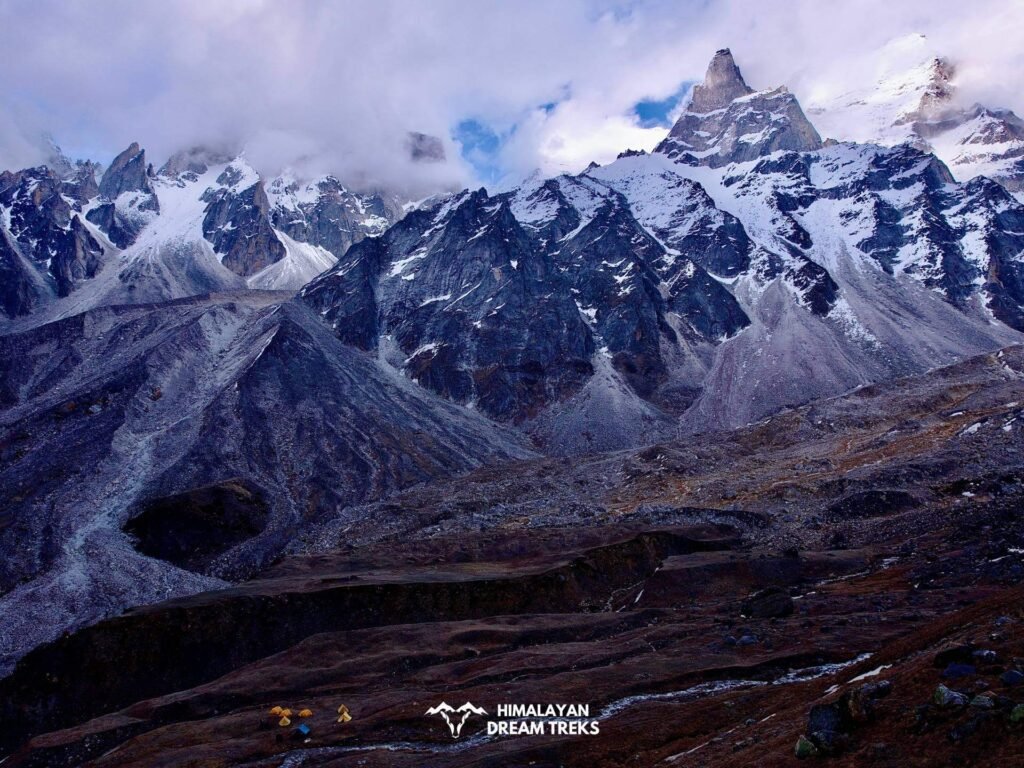
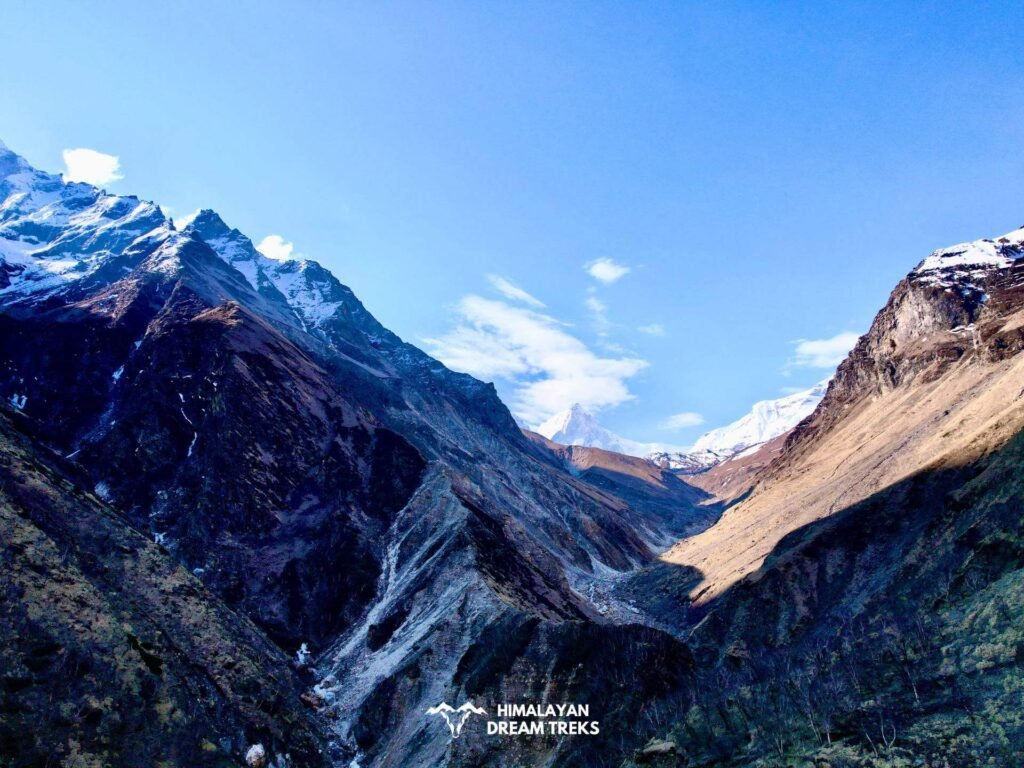
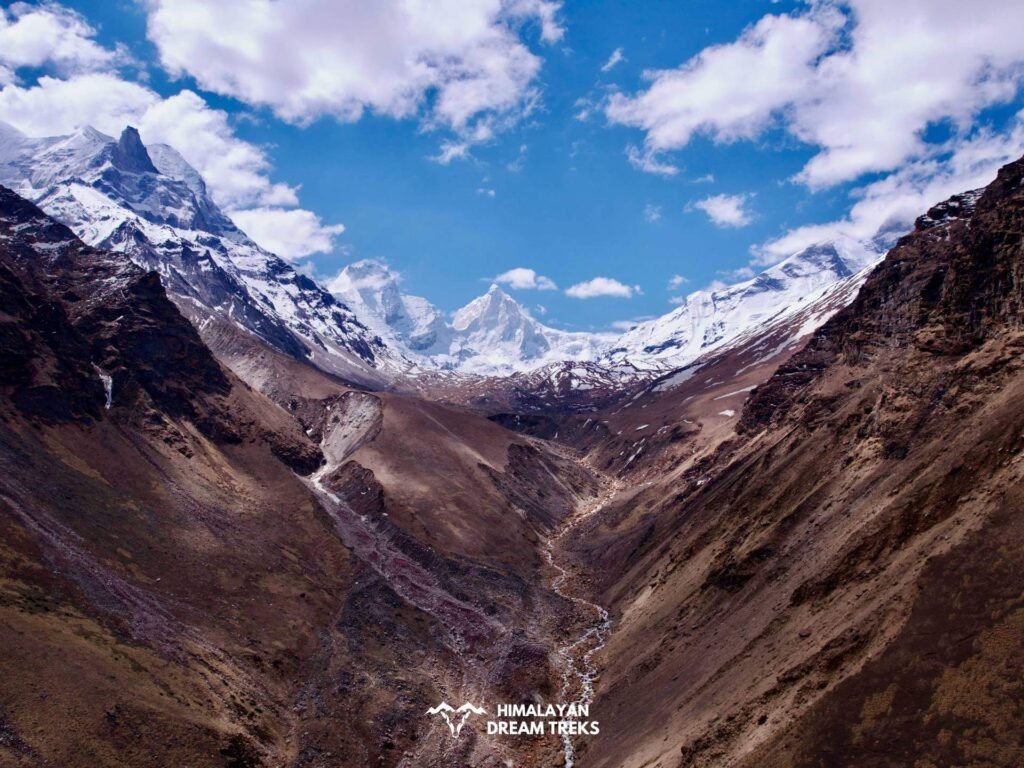


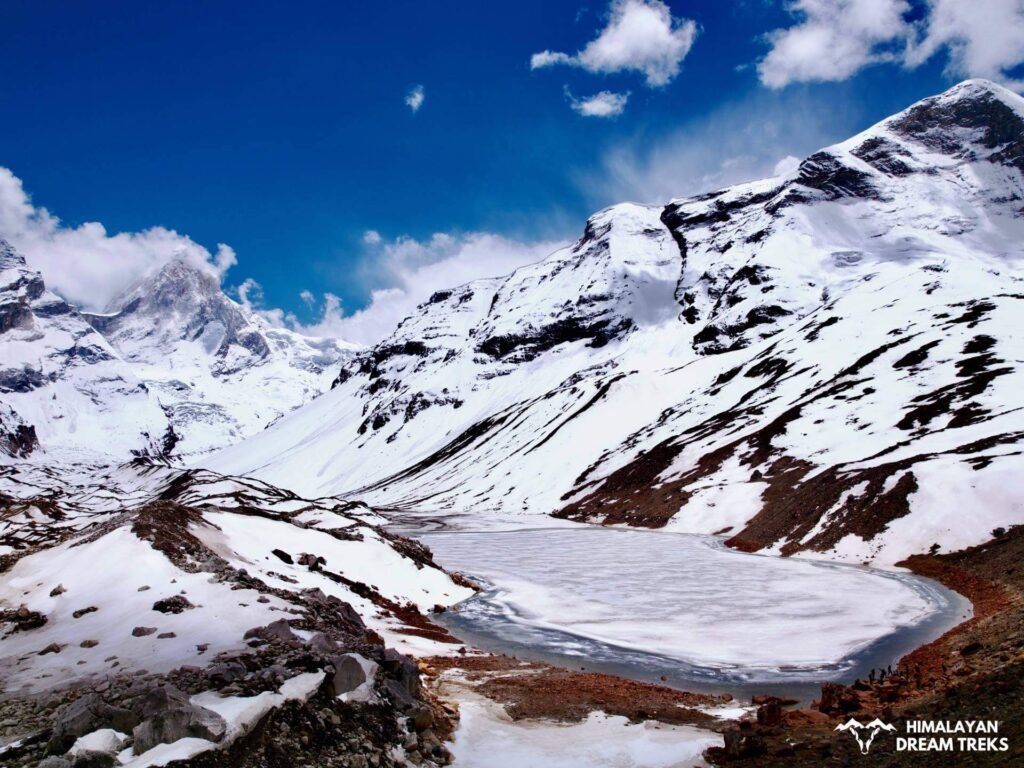


Map of Trail
FAQs
No, it’s not advisable for kids as Kedartal Trek is challenging and can be dangerous due to steep terrain and altitude.
From Kedartal, you can witness the majestic peaks of Mount Thalaysagar, Mount Bhrigupanth, Manda Parvat, Mt Jogin, and Mt Gangotri
Yes, trekking in late October can be done, but check the weather forecast before leaving for the trek.
Yes, Kedartal is a glacier lake, one of the highest in India.
Absolutely, since the trek is within Gangotri National Park, a permit is required for entry. Don’t worry we handle all the permit arrangements to ensure your hassle-free experience.
Mobile networks are limited, once you start your trek from Gangotri, you will get disconnected from the network. While rooms at the base camp have plug points for charging electronic devices, there are no charging facilities once you leave Gangotri.
It’s recommended to carry spare batteries for cameras and a power bank with a capacity of more than 10,000 mAh to ensure you have enough power for the entire trek. Cold temperatures can drain batteries faster, so keep them warm in a pouch inside your sleeping bag.
Uttarkashi has ATMs where you can withdraw cash. However, cash availability can be limited, so it’s wise to make last-minute cash withdrawals in Dehradun before starting the trek.
On Demand
/ Per Person
Available Dates
Contact us for Booking
Contact us for Booking



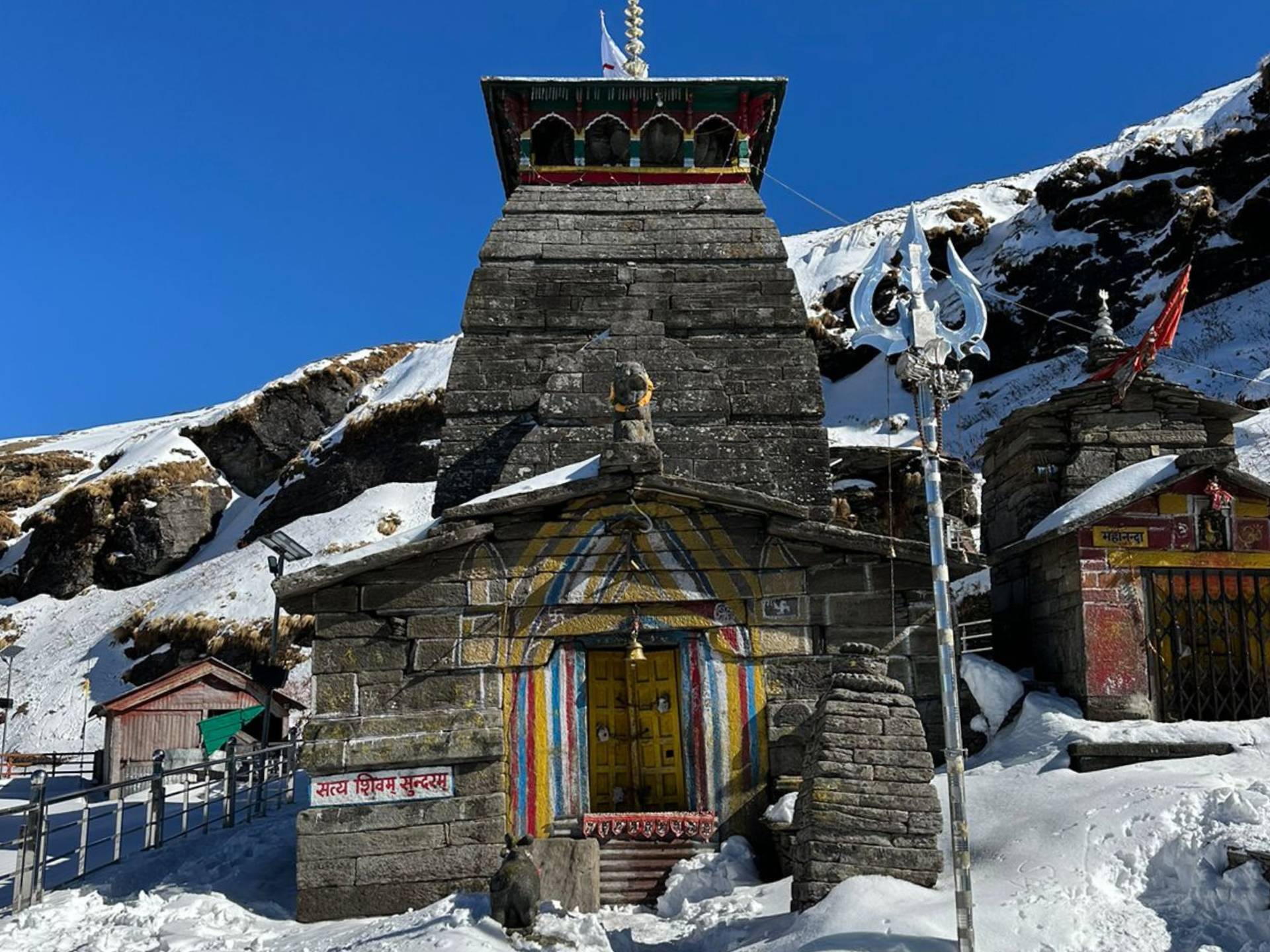

Leave a Comment